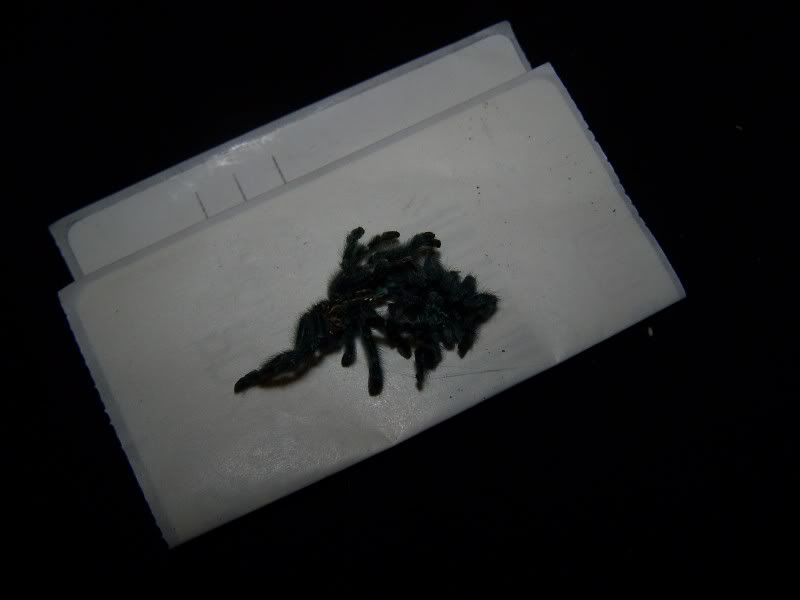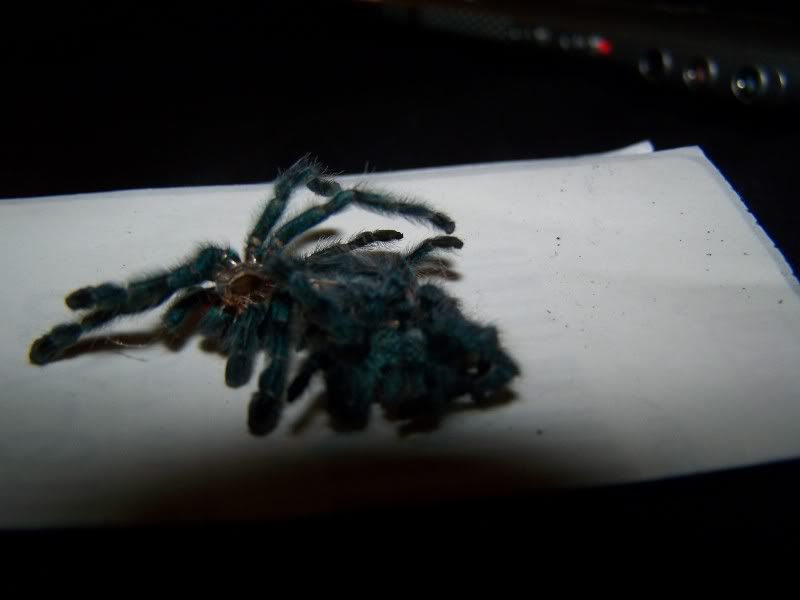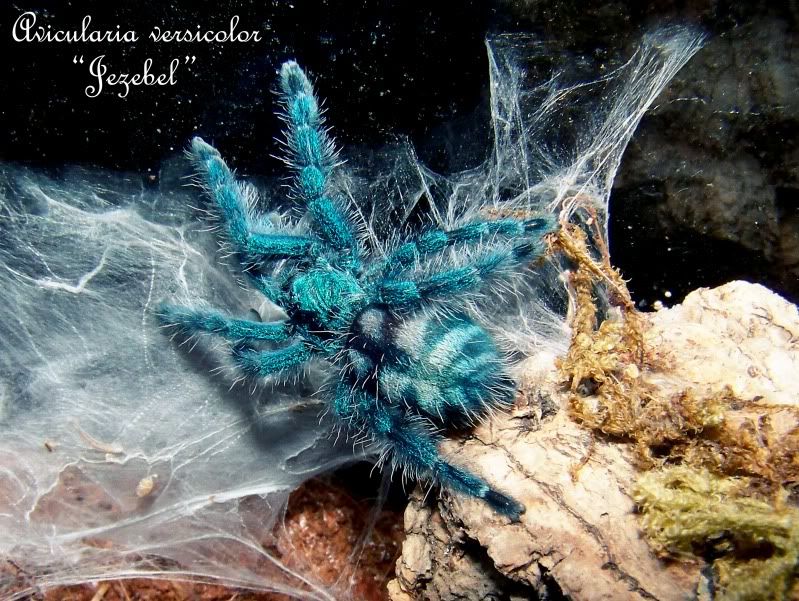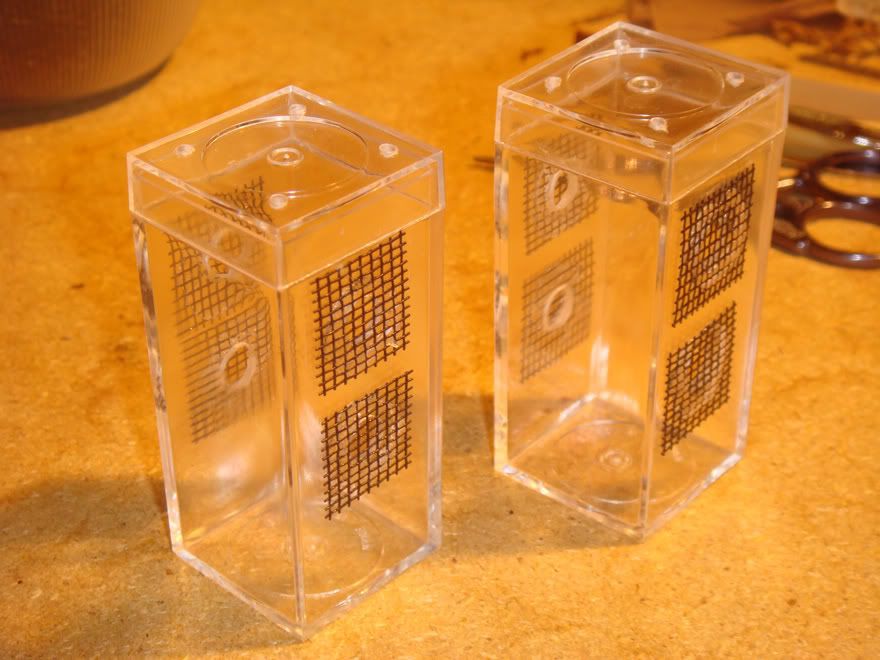- Joined
- Apr 15, 2009
- Messages
- 1,421
SADS(Sudden Avicularia Death Syndrome)
The purpose of this thread is to pinpoint the exact cause of "SADS",or at least narrow down the reasons, and why figure out why it is so common among Avicularia. I have read many cases of this phenomenon and have been victim it myself. Most of the specimens were reported to just drop down and die, without any past indication of poor health.
It would help if all users would post a complete report of the incident on this thread from now on. The report would include the following information pertaining to the specimen's husbandry:
1) Temperature range.
2) Humidity range.
3) Was a clean water bowl available at all times?(Yes/No)
4) Preferred method of humidifying.
5) Ventilation information(A image of the enclosure would be most helpful).
6) Last 5 food items fed.
7) Food item background information(Species and what the food items ate/drank).
8) Were the feeders given water crystals?(Yes/No)
9) Description of the dead spider.(Death curl etc. A image of the the dead spider would be most helpful)
10) Did the specimen show were signs of discomfort or behave oddly before its death?
(Describe behavior).
11) Avicularia size/ Species.
Additional Information: Any suggestions or opinions.
*REPORT*
1) Temperature range.
72-80F.
2) Humidity range.
80-85%.
3) Was a clean water bowl available at all times?(Yes/No)
None present.
4) Preferred method of humidifying.
Daily misting.
5) Ventilation information(A image of the enclosure would be most helpful).
50 dram vial with 15 small holes punched in on the cap for ventilation.
6) Last 5 food items fed.
Can't remember last 4 items(death occurred happened months ago). Last food item was a B.dubia nymph
7) Food item background information(What the food items ate/drank).
B.dubia.
Dog food, carrots, apples, water cystals.
8) Were the feeders given water crystals?(Yes/No)
Yes
9) Description of the dead spider. (A image of the the dead spider would be most helpful)
Curled up at the bottom of the enclosure with B.dubia roach piece still in fangs.
10) Did the specimen show were signs of discomfort or behave oddly before its death?(Describe behavior).
None
11) Avicularia size / Species.
4th/5th instar / Avicularia versicolor
The purpose of this thread is to pinpoint the exact cause of "SADS",or at least narrow down the reasons, and why figure out why it is so common among Avicularia. I have read many cases of this phenomenon and have been victim it myself. Most of the specimens were reported to just drop down and die, without any past indication of poor health.
It would help if all users would post a complete report of the incident on this thread from now on. The report would include the following information pertaining to the specimen's husbandry:
1) Temperature range.
2) Humidity range.
3) Was a clean water bowl available at all times?(Yes/No)
4) Preferred method of humidifying.
5) Ventilation information(A image of the enclosure would be most helpful).
6) Last 5 food items fed.
7) Food item background information(Species and what the food items ate/drank).
8) Were the feeders given water crystals?(Yes/No)
9) Description of the dead spider.(Death curl etc. A image of the the dead spider would be most helpful)
10) Did the specimen show were signs of discomfort or behave oddly before its death?
(Describe behavior).
11) Avicularia size/ Species.
Additional Information: Any suggestions or opinions.
*REPORT*
1) Temperature range.
72-80F.
2) Humidity range.
80-85%.
3) Was a clean water bowl available at all times?(Yes/No)
None present.
4) Preferred method of humidifying.
Daily misting.
5) Ventilation information(A image of the enclosure would be most helpful).
50 dram vial with 15 small holes punched in on the cap for ventilation.
6) Last 5 food items fed.
Can't remember last 4 items(death occurred happened months ago). Last food item was a B.dubia nymph
7) Food item background information(What the food items ate/drank).
B.dubia.
Dog food, carrots, apples, water cystals.
8) Were the feeders given water crystals?(Yes/No)
Yes
9) Description of the dead spider. (A image of the the dead spider would be most helpful)
Curled up at the bottom of the enclosure with B.dubia roach piece still in fangs.
10) Did the specimen show were signs of discomfort or behave oddly before its death?(Describe behavior).
None
11) Avicularia size / Species.
4th/5th instar / Avicularia versicolor
Last edited:






